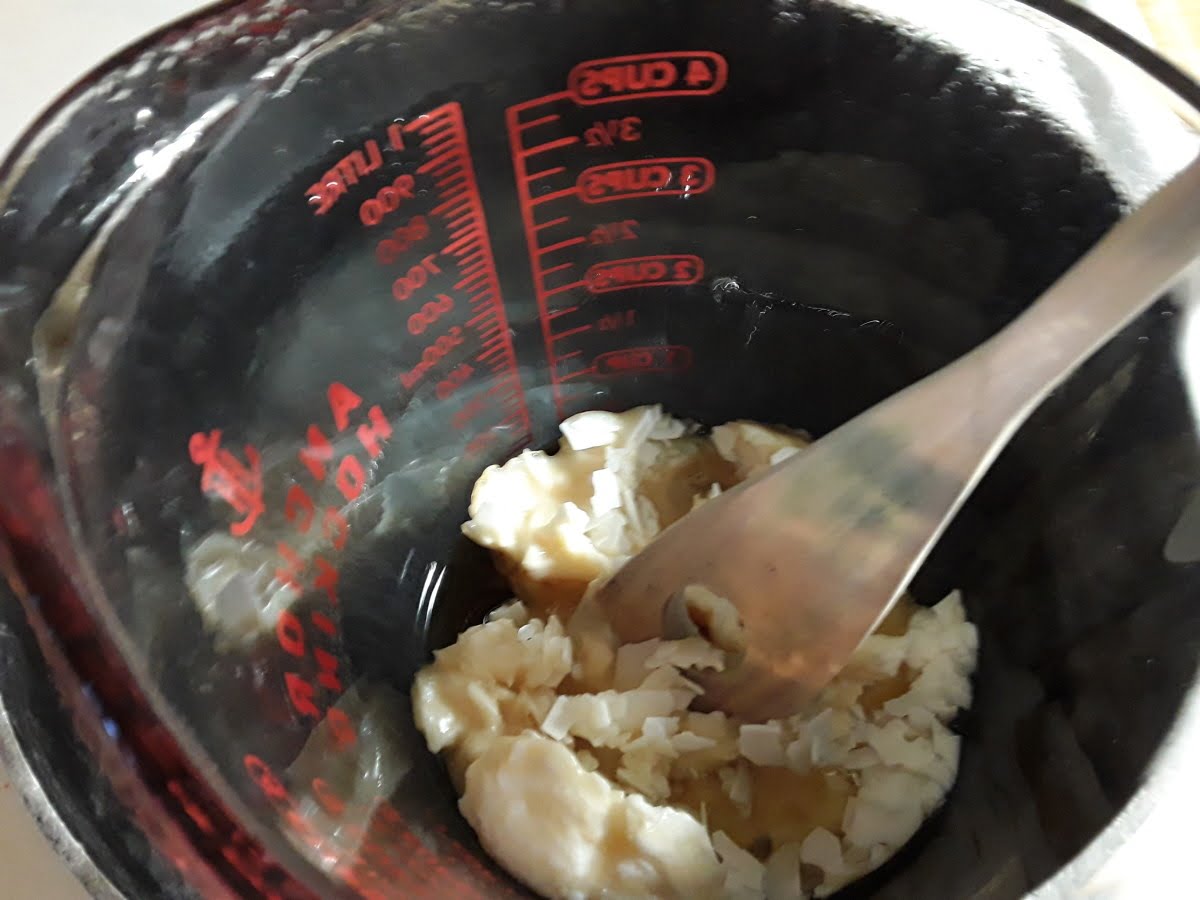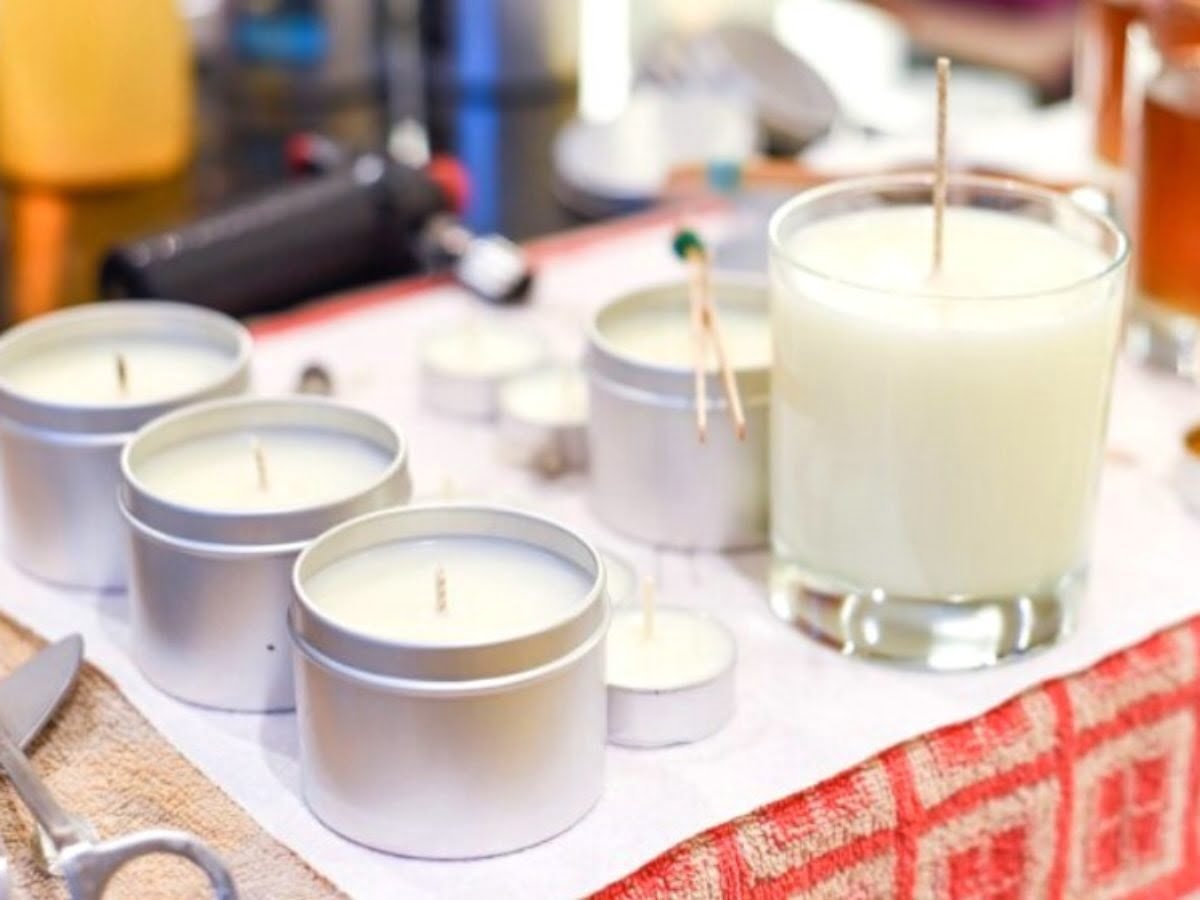The rising cases of mosquito-borne diseases and the importance of mosquito control have brought attention to the effectiveness of mosquito repellent candles. In this article, we will explore the concept of using candles as a natural and effective way to repel mosquitoes. Understanding how these candles work and learning how to make them at home can provide an alternative solution to protect ourselves from these annoying and potentially dangerous insects.
Mosquitoes are not just bothersome pests; they can transmit diseases such as malaria, dengue fever, Zika virus, and West Nile virus. With the increase in global travel and climate change, mosquitoes are thriving in new environments and spreading further than ever before. This has highlighted the urgent need for effective mosquito control methods. Mosquito repellent candles offer a natural solution that can help keep these disease-carrying insects at bay.
The science behind mosquito repellent candles lies in their active ingredients that deter mosquitoes. By understanding the science behind these ingredients and their effect on mosquitoes, we can create homemade repellent candles that are not only effective but also safe for use around families and pets. In this article, we will delve into the details of how these candles work and provide step-by-step instructions on making your own mosquito repellent candles at home using essential materials and tools.
By taking a proactive approach towards mosquito control through DIY candle making, we can not only protect ourselves but also contribute to creating a safer environment free from harmful chemicals. With the knowledge gained from this article, readers will be empowered to embrace the DIY approach to mosquito repellent candle making as an efficient and enjoyable way to keep mosquitoes away.
The Science Behind It
Active Ingredients for Mosquito Repellency
Mosquito repellent candles are designed to ward off mosquitoes and prevent them from biting humans. These candles contain active ingredients that have been scientifically proven to deter mosquitoes. The effectiveness of a mosquito repellent candle lies in its ability to release these active ingredients into the air, creating a protective barrier against mosquitoes.
There are several common active ingredients found in mosquito repellent candles, each with its unique properties and effectiveness. One widely used ingredient is citronella oil, derived from the leaves and stems of the lemongrass plant. Citronella oil works by masking the scents that attract mosquitoes to humans. When burned in a candle, it releases a strong odor that repels mosquitoes.
Another common active ingredient is geraniol, which is commonly extracted from plants such as geraniums and roses. Geraniol has been shown to effectively repel not only mosquitoes but also other insect pests such as ticks and flies. Similarly, essential oils like peppermint, lavender, and eucalyptus are known for their mosquito-repelling properties.
The Science Behind It
The science behind how these active ingredients work lies in their effect on the sensory systems of mosquitoes. Mosquitoes rely on sensory cues such as heat, carbon dioxide, and body odors to locate their hosts for a blood meal. The active ingredients found in mosquito repellent candles disrupt these sensory cues either by masking or overwhelming them.
For example, citronella oil overwhelms the olfactory receptors of mosquitoes by producing a strong scent that confuses their ability to detect human odors. This makes it difficult for mosquitoes to locate humans and decreases their likelihood of biting.
Geraniol works differently by acting as an irritant to the sensory receptors on the antennae of insects. When exposed to geraniol, mosquitoes experience discomfort or pain, deterring them from approaching the source.
It is important to understand that while mosquito repellent candles can effectively repel mosquitoes, they do not eliminate them entirely. Therefore, it is essential to use other mosquito control methods in conjunction with repellent candles for optimal protection against mosquito-borne diseases.
DIY Candle Making
When it comes to making your own mosquito repellent candles, having the right materials and tools is essential for a successful and effective DIY project. Here is a comprehensive list of the necessary materials needed for making mosquito repellent candles, as well as an understanding of the tools required and their significance in the candle making process.
Materials:
1. Wax: Selecting the right wax is crucial for creating effective mosquito repellent candles. Beeswax and soy wax are popular choices due to their natural properties that repel mosquitoes. They also have a lower melting point, making them easier to work with.
2. Wicks: Choose wicks that are specifically designed for candle making and can withstand high temperatures. Cotton or hemp wicks are ideal for mosquito repellent candles as they burn evenly and provide a steady flame.
3. Containers: Opt for containers that are heat-resistant and non-flammable, such as glass jars or metal tins. Ensure that the containers have a secure lid to protect the candle when not in use.
4. Essential Oils: Essential oils play a crucial role in repelling mosquitoes. Some popular choices include citronella, eucalyptus, lavender, lemongrass, and peppermint oil. Experiment with different combinations to find your preferred scent.
Tools:
1. Double Boiler or Wax Melter: A double boiler or wax melter is used to melt the wax gently without overheating it. This tool helps distribute heat evenly throughout the melting process.
2. Thermometer: To ensure that the wax melts at the correct temperature, use a thermometer to monitor its heat levels accurately. Different waxes require specific temperatures for optimal results.
3. Mixing Tool: A stainless steel spoon or spatula is perfect for mixing the melted wax with essential oils effectively.
4. Measuring Tools: Precise measurements are crucial in candle making. Use measuring cups or a kitchen scale to measure the wax, essential oils, and other ingredients accurately.
Having the right materials and tools not only ensures a smooth candle-making process but also contributes to creating effective mosquito repellent candles. By using quality ingredients and investing in proper equipment, you can make candles that effectively repel mosquitoes while enhancing your overall DIY experience.
| Materials | Tools |
|---|---|
| Wax (beeswax or soy wax) | Double Boiler or Wax Melter |
| Wicks (cotton or hemp) | Thermometer |
| Containers (glass jars or metal tins) | Mixing Tool (stainless steel spoon or spatula) |
| Essential Oils (citronella, eucalyptus, lavender, lemongrass, peppermint oil) | Measuring Tools (measuring cups or kitchen scale) |
Choosing the Right Wax
Choosing the right wax is essential when making mosquito repellent candles. The type of wax used can affect the effectiveness and durability of the repellent properties. There are several types of wax commonly used for candle making, each with its own unique characteristics. It is important to consider these factors when selecting the ideal wax for your mosquito repellent candles.
Different Types of Wax
There are several types of wax that can be used for making mosquito repellent candles. One popular option is soy wax, which is made from soybean oil. Soy wax is known for its clean burn and ability to hold fragrance well, making it a great choice for scented candles.
Another common choice is beeswax, which has natural mosquito-repelling properties and emits a subtle scent when burned. Paraffin wax is another option, although it is not as environmentally friendly as soy or beeswax.
Factors to Consider
When selecting the ideal wax for mosquito repellent candles, there are a few factors to consider. First, think about the burn time you desire. Beeswax and soy wax tend to have longer burn times compared to paraffin wax. Additionally, consider the scent-throw capabilities of the wax. Soy and beeswax generally have better scent-throw than paraffin wax. Lastly, take into account any personal preferences or ethical considerations you may have regarding the type of wax being used.
Blending Waxes
You may also consider blending different types of waxes to achieve desired results. For example, you could blend beeswax with soy or paraffin wax to enhance both the mosquito-repelling properties and fragrance throw of your candles. Experimenting with different ratios will allow you to customize your candles based on your preferences.
Selecting the Ideal Fragrances and Essential Oils
When making mosquito repellent candles, selecting the right fragrances and essential oils is crucial for achieving maximum effectiveness. Certain scents have natural mosquito repellent properties that can help keep these pesky insects at bay. Here are some fragrances and essential oils to consider when making your own mosquito repellent candles:
- Citronella: Citronella oil is one of the most commonly used natural insect repellents. Its strong scent masks the human odors that attract mosquitoes, making it an effective deterrent. Adding a few drops of citronella essential oil to your candle wax can help ward off mosquitoes.
- Lemon Eucalyptus: Derived from the lemon eucalyptus tree, this essential oil has been found to be just as effective as DEET in repelling mosquitoes. It contains a compound called PMD (para-menthane-diol) that acts as a repellent. Using lemon eucalyptus oil in your homemade mosquito repellent candles can provide long-lasting protection.
- Lavender: Not only does lavender have a pleasant aroma, but it also has mosquito-repelling properties. Mosquitoes dislike its scent, so incorporating lavender essential oil into your candles can help create a soothing and effective barrier against these pests.
- Peppermint: Another scent that deters mosquitoes is peppermint. The strong fragrance of peppermint essential oil makes it difficult for mosquitoes to locate their prey. Including a few drops of peppermint oil in your mosquito repellent candles not only adds a refreshing smell but also keeps those annoying bugs away.
When combining fragrances and essential oils for your homemade candles, it’s important to find the right scent combinations that work for you and provide an enjoyable experience while effectively repelling mosquitoes. Experimenting with different ratios of these scents can help achieve the perfect balance for your preferences.
Consider using other essential oils known for their mosquito-repelling properties, such as lemongrass, rosemary, and cedarwood. Each of these oils has its own unique scent profile and repellent qualities that can enhance the efficacy of your mosquito repellent candles. Remember to always do a patch test before using any essential oil to ensure you are not allergic or sensitive to it.
By carefully selecting the ideal fragrances and essential oils for your DIY mosquito repellent candles, you can create a pleasant-smelling environment while effectively keeping mosquitoes away.
Step-by-Step Candle Making Process
To create your own homemade mosquito repellent candles, follow these step-by-step instructions:
1. Prepare the wax: Start by gathering all the necessary materials, including wax flakes or blocks, a double boiler or a heat-resistant container for melting the wax, a thermometer, and a stirring utensil. Place the wax in the double boiler or heat-resistant container and melt it over low heat until it reaches a temperature of around 160-180°F (71-82°C). Stir occasionally to ensure even melting.
2. Add essential oils: Once the wax has melted, remove it from heat and let it cool slightly to around 140-150°F (60-65°C). This is important to prevent overheating the essential oils, which can cause them to lose their effectiveness. Add your chosen mosquito-repellent essential oils to the melted wax and stir well to distribute them evenly. Some effective essential oils for repelling mosquitoes include citronella, lemongrass, lavender, peppermint, eucalyptus, and rosemary.
3. Pour the candles: Prepare your candle containers by placing wicks in them and ensuring they are centered. Slowly pour the melted wax into the prepared containers, making sure not to disturb the wicks. Leave some space at the top of each container to allow for expansion during cooling. If desired, you can also add some dried herbs or flowers for aesthetic purposes.
4. Let it cool and cure: Allow the candles to cool and solidify completely at room temperature. This process may take several hours or overnight depending on the size of your candles. Avoid moving or disturbing the candles during this time to ensure they set properly.
5. Trim the wicks: Once the candles have cooled and hardened completely, trim the wicks to about ¼ inch (0.6 cm) above the surface of the wax. This will promote a clean burn and prevent excessive smoking.
Now you have your homemade mosquito repellent candles ready to use. Remember to store them in a cool, dry place away from direct sunlight to preserve their efficacy. When lighting the candles, place them in a safe location away from flammable objects and never leave them unattended. Enjoy the pleasant scent and the added benefit of keeping mosquitoes at bay.
Testing and Enhancing Effectiveness
Once you have successfully made your homemade mosquito repellent candles, it is important to test their effectiveness to ensure they are providing the desired level of mosquito repelling properties. Here are a few tips and techniques you can use to test and enhance the effectiveness of your candles.
One way to test the efficacy of your mosquito repellent candles is by conducting a simple outdoor experiment. Place a lit candle in an area known for mosquito activity, such as a patio or garden, and observe the number of mosquitoes that are attracted to the area. Compare this with an area without a candle and note any noticeable difference. This simple experiment will give you an indication of how well your candle is repelling mosquitoes.
To enhance the mosquito-repelling properties of your candles, consider adding additional ingredients that are known for their repellent properties. For example, citronella oil is a commonly used natural ingredient that can be added to your candle wax or incorporated into the fragrance blend. Citronella has been scientifically proven to repel mosquitoes effectively. Other essential oils such as lemongrass, lavender, eucalyptus, and peppermint also have mosquito-repellent qualities and can be combined with citronella for a more effective formula.
Another technique to enhance the effectiveness of your repellent candles is by using multiple candles strategically placed around an outdoor area. Mosquitoes are attracted to heat and carbon dioxide produced by humans, so placing several candles around seating areas or gathering spots can create a larger zone of protection against these pests. Additionally, consider using larger containers or jars for your candles as this will provide more surface area for the essential oils to evaporate from, increasing their potency.
It’s important to note that while mosquito repellent candles can be effective in reducing mosquito bites, they may not completely eliminate all mosquitoes in an area. Therefore, it’s advisable to use other mosquito control measures such as removing stagnant water sources, wearing protective clothing, and using insect repellent when necessary. By combining different strategies, you can create a more comprehensive approach to mosquito control and enjoy a mosquito-free environment.
Usage and Safety Guidelines
Mosquito repellent candles are a popular and effective way to keep mosquitoes away while creating a pleasant atmosphere. However, it is important to use and handle these candles properly to ensure optimal effectiveness and safety. This section will provide some guidelines on how to make the most of your mosquito repellent candles.
Firstly, when lighting your mosquito repellent candle, it is important to place it in an area where it can efficiently repel mosquitoes. Mosquitoes are attracted to heat and carbon dioxide, so placing the candle near you or other potential sources of attraction may not be as effective. Instead, try positioning the candle between you and the area you want to protect, such as entrances or sitting areas.
When using the mosquito repellent candle, it is crucial to follow basic fire safety precautions. Keep the candle away from flammable materials and never leave it unattended. Also, ensure that it is placed on a stable and heat-resistant surface. If using multiple candles in one location, make sure they are spaced apart adequately to prevent accidental fires or overheating.
To maximize the effectiveness of your mosquito repellent candle, consider using multiple candles strategically placed around your outdoor space. Creating multiple barriers of protection can enhance the mosquito-repelling effect. Additionally, keep in mind that outdoor airflow may affect the performance of the candles. If there is a strong breeze or wind, you may need more candles or choose alternative methods for mosquito control.
| Usage Guidelines | Safety Guidelines |
|---|---|
| – Place candles in strategic locations | – Keep away from flammable materials |
| – Consider using multiple candles | – Never leave candles unattended |
| – Be aware of outdoor airflow | – Place candles on stable, heat-resistant surfaces |
Conclusion
In conclusion, embracing the DIY approach to mosquito repellent candle making offers numerous benefits. By making your own mosquito repellent candles, you have control over the ingredients used, ensuring that they are all-natural and environmentally friendly. This not only protects yourself and your family from harmful chemicals but also reduces your carbon footprint. Additionally, DIY mosquito repellent candles can be a cost-effective option compared to store-bought alternatives.
Furthermore, the process of making mosquito repellent candles can be a fun and creative activity. You have the flexibility to choose from a wide range of fragrances and essential oils, allowing you to create personalized scents that suit your preferences. This makes using mosquito repellent candles a more enjoyable experience while effectively keeping mosquitoes at bay.
By taking the DIY approach to mosquito repellent candle making, you are not only protecting yourself from mosquito-borne diseases but also contributing to creating a mosquito-free environment for your loved ones. With rising cases of such diseases globally, it is crucial for individuals to take action in protecting themselves and their communities.
So why wait? Start experimenting with different scent combinations and enjoy the satisfaction of creating your own effective mosquito repellents. Embrace the DIY approach to mosquito repellent candle making and take control of your protection against these pesky insects.

Welcome to my candle making blog! In this blog, I will be sharing my tips and tricks for making candles. I will also be sharing some of my favorite recipes.



